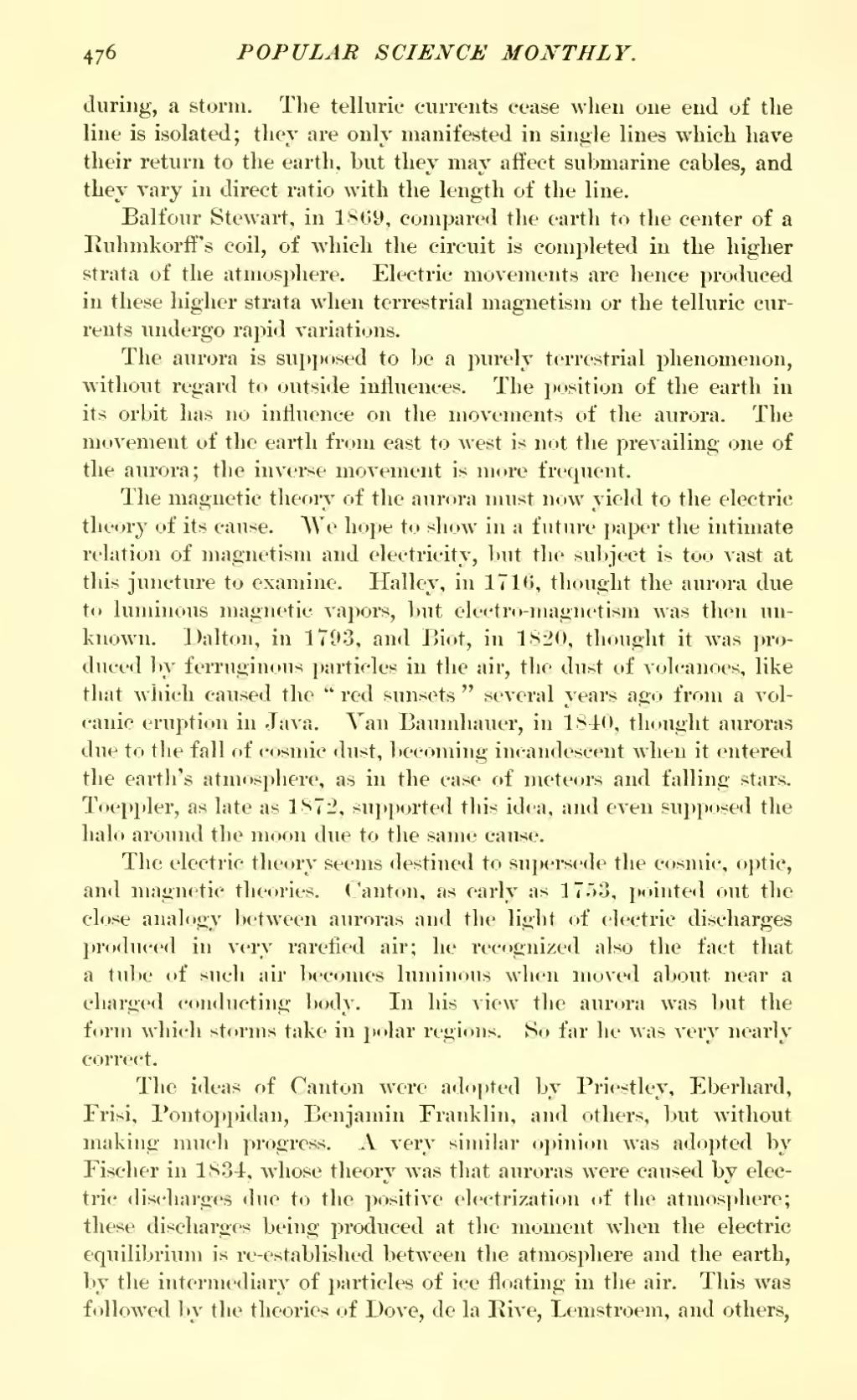during, a storm. The telluric currents cease when one end of the line is isolated; they are only manifested in single lines which have their return to the earth, but they may affect submarine cables, and they vary in direct ratio with the length of the line.
Balfour Stewart, in 1869, compared the earth to the center of a Ruhmkorff's coil, of which the circuit is completed in the higher strata of the atmosphere. Electric movements are hence produced in these higher strata when terrestrial magnetism or the telluric currents undergo rapid variations.
The aurora is supposed to be a purely terrestrial phenomenon, without regard to outside influences. The position of the earth in its orbit has no influence on the movements of the aurora. The movement of the earth from east to west is not the prevailing one of the aurora; the inverse movement is more frequent.
The magnetic theory of the aurora must now yield to the electric theory of its cause. We hope to show in a future paper the intimate relation of magnetism and electricity, but the subject is too vast at this juncture to examine. Halley, in 1716, thought the aurora due to luminous magnetic vapors, but electro-magnetism was then unknown. Dalton, in 1793, and Biot, in 1820, thought it was produced by ferruginous particles in the air, the dust of volcanoes, like that which caused the "red sunsets" several years ago from a volcanic eruption in Java. Van Baumhauer, in 1840, thought auroras due to the fall of cosmic dust, becoming incandescent when it entered the earth's atmosphere, as in the case of meteors and falling stars. Toeppler, as late as 1872, supported this idea, and even supposed the halo around the moon due to the same cause.
The electric theory seems destined to supersede the cosmic, optic, and magnetic theories. Canton, as early as 1753, pointed out the close analogy between auroras and the light of electric discharges produced in very rarefied air; he recognized also the fact that a tube of such air becomes luminous when moved about near a charged conducting body. In his view the aurora was but the form which storms take in polar regions. So far he was very nearly correct.
The ideas of Canton were adopted by Priestley, Eberhard, Frisi, Pontoppidan, Benjamin Franklin, and others, but without making much progress. A very similar opinion was adopted by Fischer in 1834, whose theory was that auroras were caused by electric discharges due to the positive electrization of the atmosphere; these discharges being produced at the moment when the electric equilibrium is re-established between the atmosphere and the earth, by the intermediary of particles of ice floating in the air. This was followed by the theories of Dove, de la Kive, Lemstroem, and others,
